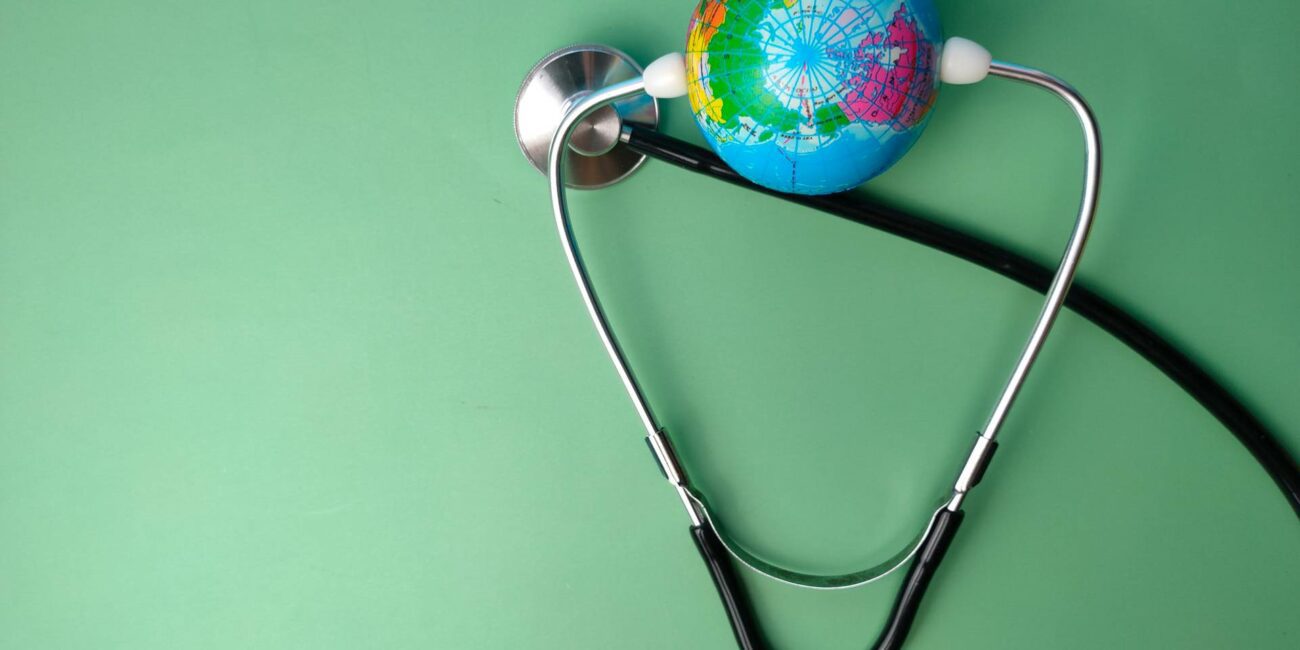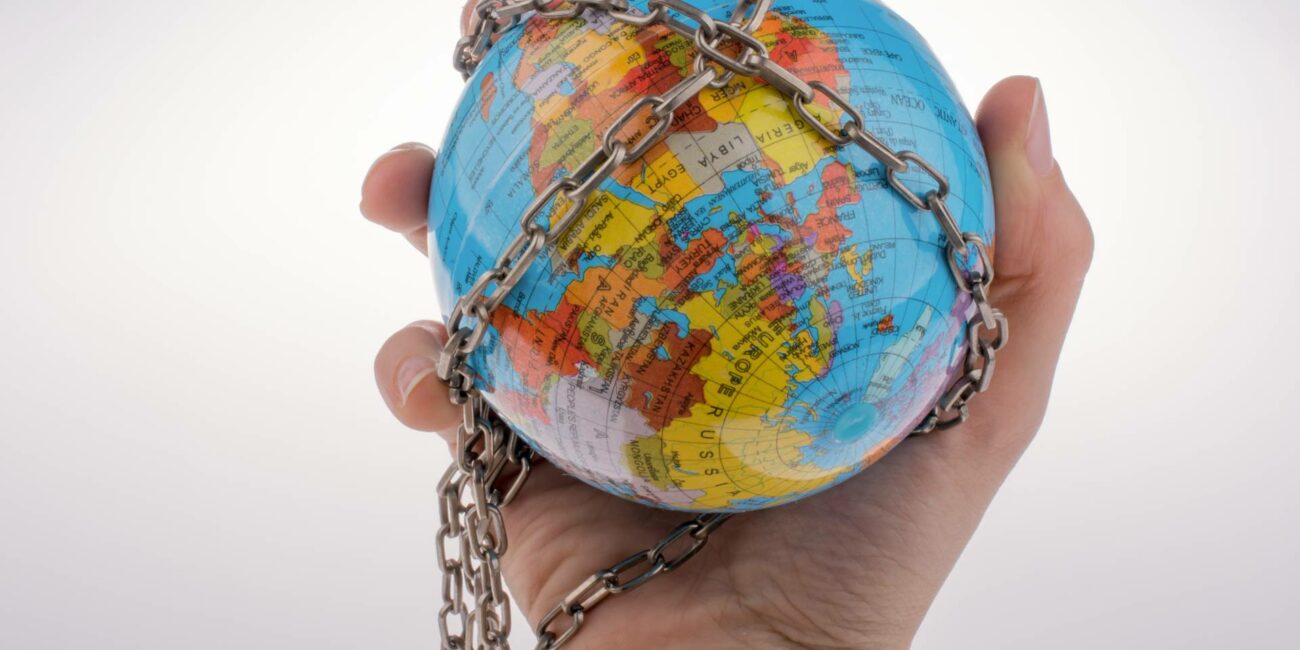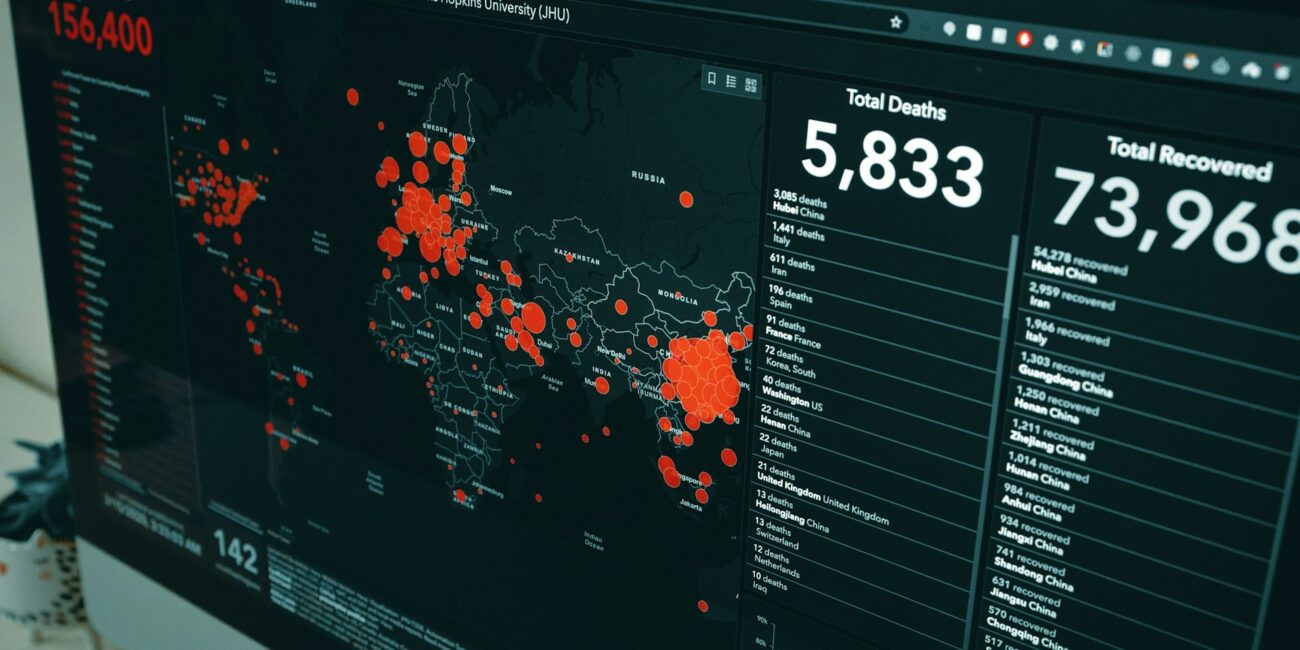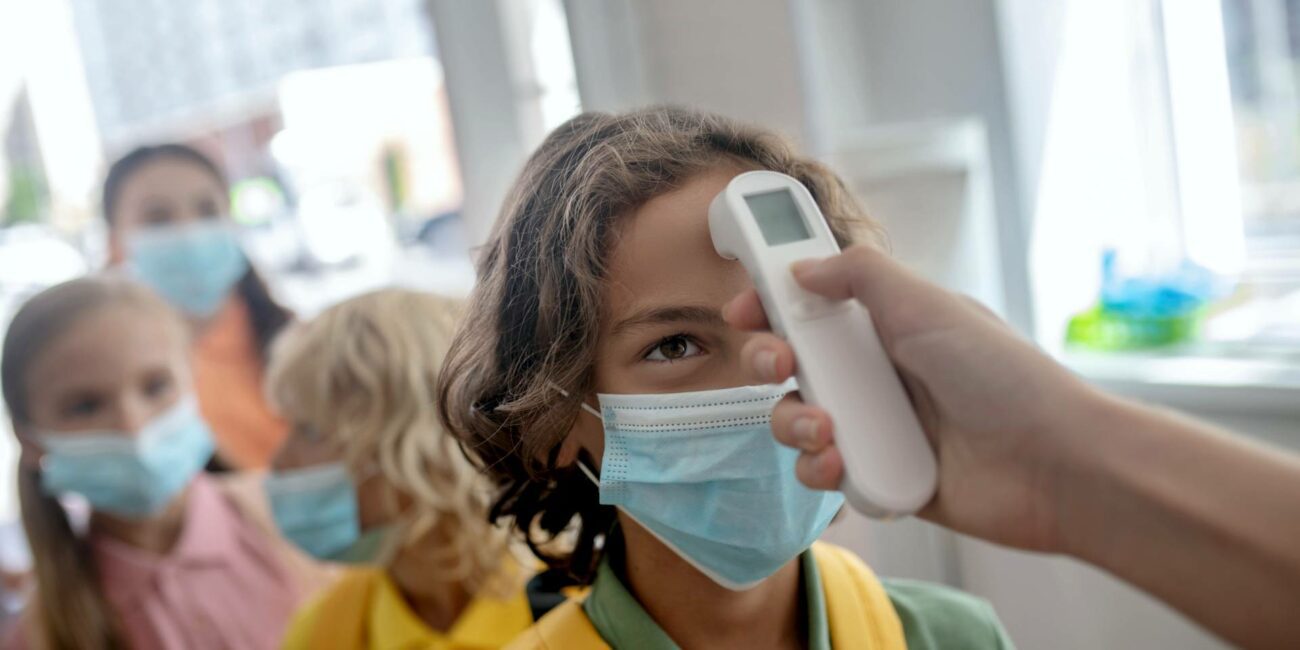by Abir Ballan
As the reality of the SARS-CoV-2 virus being endemic becomes clearer, some governments have shifted their focus towards a more realistic way of living with the virus. We all wish to regain normality. However, the question on everyone’s mind is, “How do we live with a virus that can be dangerous to high-risk individuals with no prior immunity or a weakened immune system?”
How do we protect the vulnerable and move on with life?
The Vulnerable
COVID-19 presents a negligible risk to most of the population. Unfortunately, as with other infectious respiratory diseases, COVID-19 poses a more serious risk of severe illness and death to the elderly and individuals with multiple health problems. Despite this, the median age of death with COVID-19 is similar to that of natural mortality in most countries, while about 95% of deaths occur in individuals with one or more existing health problems.
Health Interventions Based On Needs
Lockdowns —a blunt one-size-fits-all approach— failed to stop transmission or to protect the vulnerable and caused immense collateral damage, particularly to the young and the poor. They are the antithesis of public health. The role of public health agencies is to offer accurate information and support, build healthcare capacity and allow individuals and local communities to make health decisions for their physical, mental, social wellbeing and quality of life. Thus, health interventions (medical or non-pharmaceutical) with established safety and efficacy should be offered to those for whom the benefit of the intervention clearly outweighs its risks.
The ‘Safe’ Green Zones
The Centers for Disease Control and Prevention (CDC) in the US proposed the shielding approach in July 2020, as an alternative to lockdowns. The proposal suggested placing high-risk individuals in self-sustaining “camps”, isolated from loved ones and society for 6 months. The residents would be expected to clean the camp, with able-bodied residents taking care of less mobile ones. High-risk children would also be kept in these camps with no mention of any provisions being made for their education or other activities. Strict protocols were laid out for the delivery of supplies and food; whatever is needed for the upkeep of a camp containing a concentrated population of vulnerable people.
The CDC admits that there is no empirical evidence to show that this approach would reduce infections, hospitalisations or deaths among the vulnerable. In fact, they note the weakness of such an approach as the virus may invade the ‘safe’ camp, endangering its entire population and completely defeating its purpose. Real life data shows that most deaths with COVID-19 occured in care homes where there is a concentration of vulnerable individuals —easy prey for the ubiquitous virus.
The CDC warns that this optional incarceration of the vulnerable population may have detrimental effects, “ significant emotional distress, exacerbate existing mental illness or contribute to anxiety, depression, helplessness, grief, substance abuse, or thoughts of suicide.”
Such camps are reminiscent of periods of our human civilization that should never be forgotten, lest they are repeated.
“If it were possible for any nation to fathom another people’s bitter experience through a book, how much easier its future fate would become and how many calamities and mistakes it could avoid. But it is very difficult. There always is this fallacious belief: ‘It would not be the same here; here such things are impossible.’
Alas, all the evil of the twentieth century is possible everywhere on earth.”
― Aleksandr Solzhenitsyn, The Gulag Archipelago 1918–1956
Focused Protection
In October 2020, The Great Barrington Declaration (GBD) proposed a focused protection approach: “The most compassionate approach that balances the risks and benefits of reaching herd immunity, is to allow those who are at minimal risk of death to live their lives normally to build up immunity to the virus through natural infection, while better protecting those who are at highest risk”. This approach also promotes the voluntary shielding of the most vulnerable from contact with the rest of the population for the duration of an outbreak, by working online and having their groceries delivered or temporarily relocating the elderly living in multi-generational homes.
Although this approach is an improvement on the previous one, taking into account the detrimental consequences of self-isolation and allowing the vulnerable to meet their loved ones outdoors where transmission is almost nil, it raises the question of how it will be implemented effectively, especially in impoverished communities. Furthermore, it is based on the unrealistic assumption that it is possible to shield from a highly infectious virus. It imposes unfair requirements on care home staff and visitors such as testing multiple times per week using an invasive method that can be painful. The testing of asymptomatic individuals is very unlikely to yield any benefit as asymptomatic transmission is not a main driver of disease outbreaks – especially when PCR tests are used, which are unfit to diagnose infectiousness. They detect dead and active viral material alike, leading to the unnecessary quarantining of many healthy staff members.
The GBD also recommends prioritizing vaccination against COVID-19 for high-risk individuals and their caregivers. Although vaccination of the first group is justified when the benefit of the intervention outweighs its risks for the individual, vaccination of the latter should only be based on the individual’s medical need for the intervention. Some took this recommendation as a justification for mandatory vaccination of caregivers to protect high-risk individuals. As recent studies have shown, the COVID-19 vaccines are not sterilizing, meaning they do not stop infection or transmission. Even if they were, healthcare workers should not be required to take the vaccines to protect others. Firstly, after a year and half of the pandemic, it is unlikely that there remain many healthcare workers who are not naturally immune and natural immunity is far superior to vaccine-induced immunity. Secondly, vaccines, as with any other medical intervention, come with (possibly severe) risks, and no one should be forced or pressured into having a potentially lethal intervention. Vaccines are supposed to protect the vaccinated and should be recommended based on individual net benefit.
Finally, the GBD recommends employing immune caregivers. This helps reduce the burden of disease among staff, but not among the vulnerable. There is no compelling scientific reason to select healthcare workers based on their immunity status (naturally immune, vaccinated, with cross-immunity from exposure to closely related viruses, or non-immune), as long as the rule of ‘don’t come to work if exhibiting the slightest viral respiratory symptoms’ is observed. Nosocomial transmission (infections acquired in hospitals or care homes) occurs mostly as a result of the ambient air containing a high viral load from other symptomatic patients, not from healthy non-symptomatic healthcare workers. Immunity status should not be grounds for discrimination in employment.
Put Your Money Where Your Heart Is
Resources are better spent where they can make a real difference, instead of being squandered on the young and healthy. We need to start with the correct goal. The “Zero Covid” goal of eliminating transmission and eradicating the virus was always implausible and has proven impossible. SARS-CoV-2 spreads by aerosols and can remain suspended in the air for days. The correct goal should have been to reduce hospitalisations and deaths in the vulnerable population.
If we begin by accepting that there is little we can do in the face of an airborne virus, we can focus our efforts while being mindful of not causing harm elsewhere.
PANDA proposed a number of recommendations in the Protocol for Reopening Society in December 2020 to facilitate a return to normal life.
Below are some updated recommendations to reduce hospitalisations and deaths in the vulnerable which are not based on isolating them from the rest of the population. Social isolation leads to poor health outcomes and is counterproductive.
Recommendations For The Vulnerable
- Recommend that vulnerable persons avoid closed, poorly ventilated indoor spaces during peak outbreaks in order to reduce exposure to high viral loads.
- Recommend that vulnerable persons stay away (not in the same room) from any person exhibiting viral respiratory symptoms until their symptoms subside (infectivity generally lasts 8 days and there is no need to wait for a negative PCR test as the results can remain inaccurately positive for up to 3 months).
- Educate vulnerable individuals on the nature of airborne viruses, and the consequent ineffectiveness of measures such as masks, plexiglass screens and social distancing stickers. The wearing of masks by uninfected high-risk individuals leads to a false sense of safety. The wearing of masks by ill high-risk individuals is risky as it reduces their oxygen intake.
- Encourage individuals to improve their health by leading a healthy lifestyle (staying away from processed food and staying active).
- Provide prophylactic treatment (drugs, such as Ivermectin, and supplements, such as Vitamin D, C and Zinc) to high-risk groups ― in accordance with their physician’s recommendations― to prevent infection.
- Offer the COVID-19 vaccines to high-risk individuals who are not recovered from COVID only when the benefits of the vaccines clearly outweigh their risks for the individual. Accurate and transparent information about the benefits (less than 1% absolute risk reduction from the virus) and the risks (unprecedented high level of adverse events) of the COVID-19 vaccines must be shared with the vulnerable prior to acquiring their informed consent. Under no circumstances should vaccination be mandatory for high-risk individuals.
- Test symptomatic high-risk patients, both vaccinated and unvaccinated, promptly in order to inform their treatment.
- Provide early treatment to high-risk patients, especially if they progress to the inflammatory stage, instead of adopting a wait-and-see approach. Early treatment is estimated to reduce hospitalisation by 88% and deaths by 75%.
- Provide effective treatment to patients in the event of hospitalisation. This consists of antiviral drugs to slow the replication of the virus, anti-inflammatory drugs to reduce inflammation caused by the immune response and anticoagulants to prevent blood clotting.
- Develop emotional support interventions for high-risk individuals to reduce their anxiety levels, and in turn mortality with COVID. A recent study shows that anxiety and fear-related disorders are the second strongest risk factor associated with death with COVID.
Recommendations For Communities
- Advise high-risk individuals to seek alternative temporary housing with a relative or friend if a member of their household presents with viral respiratory symptoms, until the symptoms subside and the home is well ventilated.
- Move high-functioning elderly people out of care homes and into the community. Multi-generational homes may have a protective effect on the elderly, as children generally shed a very low viral load when infected, which acts like an inoculation or ‘natural vaccination’ for adults.
- Allow low-risk individuals to acquire natural immunity for SARS-CoV-2 to protect the vulnerable. A recent study showed that immune members confer protection from infection to other members of their household. Given that natural immunity is broader and longer-lasting than non-sterilizing vaccine-induced immunity, and does not carry the risk of adverse events, it is the preferred route for low-risk individuals.
Recommendations For Health Institutions
- Dedicate well-isolated wards in specific hospitals to the treatment of COVID-19 patients to limit nosocomial transmission in all hospitals. This also facilitates more cost-effective use of resources and reduces the burden of disease among healthcare workers.
- Create makeshift units outside care homes for elderly patients with COVID-19, to limit transmission to other vulnerable individuals.
- Ensure that the ventilation systems in hospitals and care homes are optimal for reducing viral load in these facilities.
- Ask staff and visitors of care homes and hospitals to stay away at the slightest symptom of respiratory illness or the sensation of becoming ill prior to the onset of symptoms (commonly referred to as ‘feeling like you are coming down with something’). This is a courtesy that the general public owes any vulnerable person in their community.
- Convert redundant testing and vaccination centers into prophylactic or early treatment centers, since mass testing and mass vaccination are not justified.
While opinions on the correct protocols around SARS-CoV-2 are clearly varied, it is worth remembering that proponents on both sides of the debate have the same goal. We all want to reduce death, misery and harm while maintaining human dignity. How do we protect the vulnerable and move on with life? We respect their informed risk-benefit analysis, based on what they value most in life, and we support their decision. Do they value prolonging a solitary existence or do they value living life to the fullest? Each of these decisions has its own trade-offs. It is for each person to choose and not for society to decide what’s best for them. What we should never do is place anyone with a positive test or the unvaccinated in isolation camps, using immunity status as a condition of participation in society under the ‘noble’ pretext of protecting the vulnerable. This is the route to dismantling the fabric of our society and descending into tyranny. Our survival depends on us living together.

Abir Ballan, MPH
Photo by Philippe Leone on Unsplash
Abir Ballan has a Masters in Public Health and a background in psychology, and education. She is a member of the Executive Committee at PANDA (Pandemics—Data & Analytics)— Twitter, Facebook, Telegram, LinkedIn.
PANDA’s Protocol for Reopening Society builds upon existing pandemic frameworks and incorporates current scientific understanding of Covid-19, to provide a road-map out of the damaging cycle of lockdowns.




